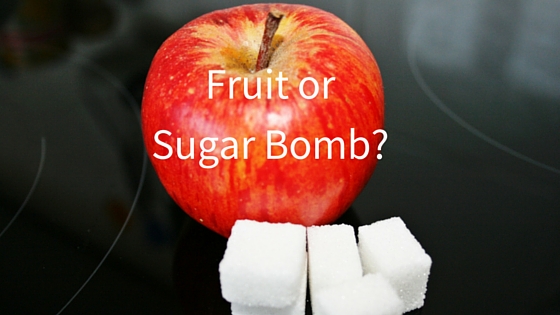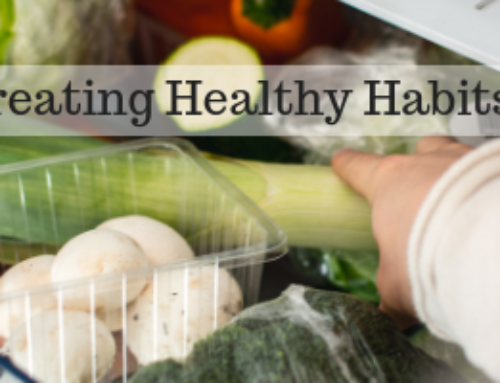Fruit is good for you, right? Well… “yes” it is, however, the answer is a little bit more complex due to the sugar content of fruit. This is especially true for individuals who are trying to monitor their sugar intake and keep it down, which is probably most of you. See, fruit isn’t what it used to be. It has been hybridized over the years to get bigger, sweeter, and blemish free.
Because fruit has been bred to be bigger it’s important to watch your serving sizes. The average apple in your produce section today is 3 ½ inches wide and contains 30 grams of carbohydrate. A serving of fruit, by RDA standards, is 15 grams of carbohydrate. Therefore, the average apple is equal to two servings of fruit.
Another key factor you want to keep in mind is fiber content. Fiber is the indigestible carbohydrate in the fruit that helps prevent the sugar from being digested too quickly, thereby providing a more gradual release of that sugar into the bloodstream. This is one reason fruit juice is a big no-no. All the fiber has been extracted, and the sugar in the juice hits the bloodstream at a very fast rate. (Technically the fructose from fruit hits the liver, and less so the bloodstream, but for simplicity’s sake, let’s save that for a future discussion). Think about the time it takes you to eat a whole apple, verses drink the juice from an apple. There isn’t a comparison.
In general, I recommend low sugar fruits, that are high in fiber. Berries tend to be best for this, and they are full of antioxidants that have proven benefit to the body. As a rule of thumb, your berries are low sugar fruits, while tropical fruits and dried fruit are higher in sugar. How much should you eat? It is very individual, but one – two servings of low sugar fruit per day is fine for most individuals. If you struggle to keep your blood sugars down, then you may wish to be more conservative with fruit intake. Also, if you are trying to adopt a lower sugar diet for fat loss, then understanding which fruits are sugar bombs is also important. Remember, as a general rule of thumb, vegetables will give you more nutrients per calorie or carbohydrate gram then fruit will, so I encourage you to eat more veg for this very reason.
Here is a chart that breaks down fruits according to their carbohydrate, fiber, and sugar content.
| Fruit, (serving size) | Calories | Fiber (g) | Total Carb (g) | Sugar (g) |
| Lime (1 fruit 2” diam) | 20 | 2 | 7 | 1 |
| Rhubarb, (1 cup diced) | 26 | 2 | 5.5 | 1 |
| Lemon (1 fruit 2 1/8” diam, w/o peel) | 17 | 2 | 5 | 1.5 |
| Cranberries (1 cup, whole, raw) | 47 | 4 | 12 | 4 |
| Tomato (1 med 3”) | 33 | 2 | 7 | 5 |
| Kiwi (1 fruit 2” with skin) | 42 | 2 | 10 | 6 |
| Raspberries (1 cup raw) | 64 | 8 | 15 | 5 |
| Strawberries (1 cup halves) | 49 | 3 | 12 | 7 |
| Blackberries (1 cup, raw) | 62 | 8 | 14 | 7 |
| Grapefruit (1 fruit 3 ¾“ diam) | 52 | 2 | 13 | 8 |
| Tangerine (1 med, 2 1/2” diam) | 47 | 2 | 12 | 9 |
| Kumquats (5) | 67 | 6 | 15 | 9 |
| Watermelon (1 cup diced) | 46 | < 1 | 11 | 10 |
| Papaya (1 cup, cubed) | 62 | 3 | 16 | 11 |
| Loganberries (1 cup frozen) | 81 | 8 | 19 | 11 |
| Cantaloupe, (1 cup) | 54 | 1.5 | 13 | 12 |
| Orange (1 large 3” diam) | 70 | 3 | 18 | 13 |
| Apricot (4 fresh/raw) | 67 | 3 | 16 | 13 |
| Plum (2 med, 2 1/8” diam) | 61 | 2 | 15 | 13 |
| Peach (1 large, 2 ¾ “ diam) | 68 | 3 | 17 | 14 |
| Honeydew melon (1 cup, diced) | 64 | 1 | 16 | 14 |
| Blueberries (1 cup raw) | 84 | 4 | 21 | 15 |
| Guava (1 cup) | 112 | 9 | 24 | 15 |
| Banana (1 med., 7”-7 7/8” long) | 105 | 3 | 27 | 15 |
| Pineapple (1 cup chunks) | 82 | 2 | 22 | 16 |
| Pear (1 med) | 112 | 5 | 26 | 17 |
| Prunes (¼ cup, dried, uncooked, pitted) | 104 | 3 | 28 | 18 |
| Cherries (1 cup w/ pits) | 87 | 3 | 22 | 18 |
| Pomegranate (½ fruit 4” diam) | 117 | 6 | 26 | 19 |
| Apple (1 med., 3” diam) | 95 | 4 | 25 | 19 |
| Grapes (1 cup, seedless) | 104 | 1.5 | 27 | 23 |
| Mango (1 cup sliced) | 100 | 2.5 | 25 | 23 |
| Figs (3 fruit, 2 ¼” diam ea.) | 111 | 4 | 29 | 24 |
| Dates (1/4 cup, pitted, chopped) | 104 | 3 | 28 | 24 |
| Raisins (1/4 cup packed, seedless) | 124 | 1.5 | 33 | 25 |
As always, if you enjoyed this blog post, please share with family and friends!






